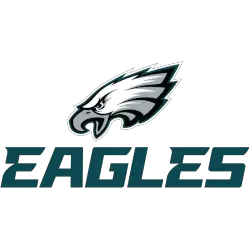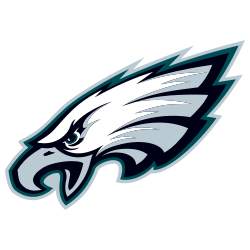The Philadelphia Eagles, a professional American football team based in Philadelphia, Pennsylvania, has had several different logos throughout their history since 1933 when the original or first logo was created. Below are some details about the long journey of the logo: 1933 Philadelphia Eagles Primary Logo 1933 – 1942 The team’s original logo was created in 1933, when the team …
New Mod Wordmark Unveiled for the Philadelphia Eagles
The Philadelphia Eagles have had quite a few logos throughout their franchise history. This is especially the case when it comes to wordmark logos. The franchise’s current wordmark logo design first came into fruition in 1996. However, the franchise’s current wordmark logo is set to change as of last Thursday. On that day, the franchise introduced a new wordmark logo …
Philadelphia Eagles Wordmark Logo
Philadelphia Eagles 1996 – Present The team’s logo changed in 1996, with the eagle limited to a white bald head, drawn in a more cartoon based style. The eagle has determined and aggressive attack look with mouth open. The logo has a silver border to give it a 3-D look. The current logo has a hidden “E” on the neck …
Philadelphia Eagles Alternate Logo
Philadelphia Eagles 1996 – Present The team’s logo changed in 1996, with the eagle limited to a white bald head, drawn in a more cartoon based style. The eagle has determined and aggressive attack look with mouth open. The logo has a silver border to give it a 3-D look. The current logo has a hidden “E” on the neck …
Philadelphia Eagles Primary Logo
Philadelphia Eagles 1996 – Present The team’s logo changed in 1996, with the eagle limited to a white bald head, drawn in a more cartoon based style. The eagle has determined and aggressive attack look with mouth open. The logo has a silver border to give it a 3-D look. The current logo has a hidden “E” on the neck …





